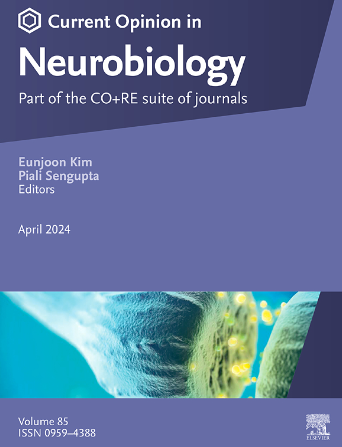自闭症谱系障碍中的NMDAR功能障碍:10年研究的经验教训
IF 5.2
2区 医学
Q1 NEUROSCIENCES
引用次数: 0
摘要
在过去十年左右的时间里,人们对自闭症谱系障碍(ASD)的小鼠模型进行了广泛的研究,以寻找该疾病的关键机制。许多有趣的机制已经被提出,跨越神经系统的各个层面,包括分子,突触,神经元,电路和系统水平的过程。然而,没有单一的机制是普遍适用的,这突出了ASD的遗传和神经生物学基础的异质性。其中,NMDA受体(NMDAR)功能障碍假说引起了极大的关注。许多小鼠模型表现出NMDAR功能障碍,NMDAR功能减退比功能亢进更为普遍。然而,并不是所有的小鼠模型都显示出这种功能障碍,这表明NMDAR异常可能不是在所有模型中普遍存在,或者我们尚未充分探索ASD中NMDAR相关功能障碍的频谱。这些发现强调了在研究ASD小鼠模型时需要考虑多个因素,包括同一基因内的不同突变、基因缺失剂量、遗传背景、性别、年龄、大脑区域、细胞类型和神经回路。本文章由计算机程序翻译,如有差异,请以英文原文为准。
NMDAR dysfunction in autism spectrum disorders: Lessons learned from 10 years of study
Over the past decade or so, mouse models of autism spectrum disorders (ASD) have been extensively studied in the search for key mechanisms underlying the disorder. Numerous intriguing mechanisms have been proposed, spanning various levels of the neural system, including molecular, synaptic, neuronal, circuit, and systems-level processes. However, no single mechanism has emerged as universally applicable, highlighting the heterogeneous nature of the genetic and neurobiological underpinnings of ASD. Among these, the NMDA receptor (NMDAR) dysfunction hypothesis has garnered significant attention. Many mouse models exhibit NMDAR dysfunction, with NMDAR hypofunction appearing more prevalent than hyperfunction. Nevertheless, not all mouse models display this dysfunction, suggesting that NMDAR abnormalities may not be ubiquitous across models, or that we have yet to fully explore the spectrum of NMDAR-related dysfunction in ASD. These findings underscore the need to consider multiple factors when studying ASD mouse models, including different mutations within the same gene, gene deletion dosage, genetic background, sex, age, brain regions, cell types, and neural circuits.
求助全文
通过发布文献求助,成功后即可免费获取论文全文。
去求助
来源期刊

Current Opinion in Neurobiology
医学-神经科学
CiteScore
11.10
自引率
1.80%
发文量
130
审稿时长
4-8 weeks
期刊介绍:
Current Opinion in Neurobiology publishes short annotated reviews by leading experts on recent developments in the field of neurobiology. These experts write short reviews describing recent discoveries in this field (in the past 2-5 years), as well as highlighting select individual papers of particular significance.
The journal is thus an important resource allowing researchers and educators to quickly gain an overview and rich understanding of complex and current issues in the field of Neurobiology. The journal takes a unique and valuable approach in focusing each special issue around a topic of scientific and/or societal interest, and then bringing together leading international experts studying that topic, embracing diverse methodologies and perspectives.
Journal Content: The journal consists of 6 issues per year, covering 8 recurring topics every other year in the following categories:
-Neurobiology of Disease-
Neurobiology of Behavior-
Cellular Neuroscience-
Systems Neuroscience-
Developmental Neuroscience-
Neurobiology of Learning and Plasticity-
Molecular Neuroscience-
Computational Neuroscience
 求助内容:
求助内容: 应助结果提醒方式:
应助结果提醒方式:


